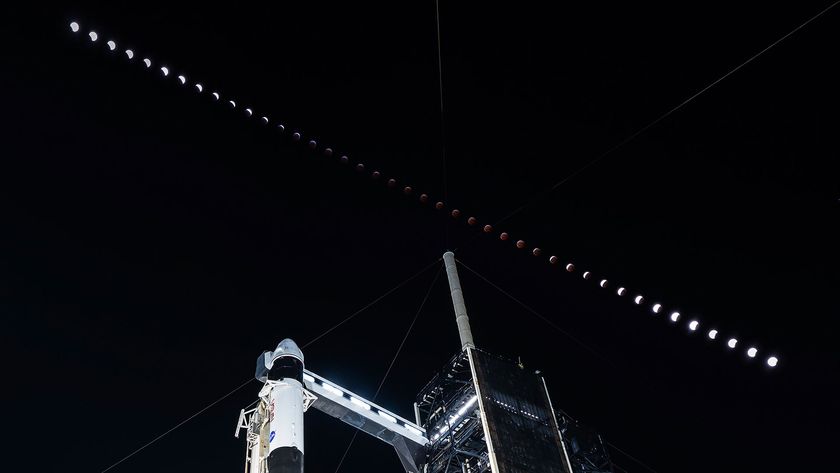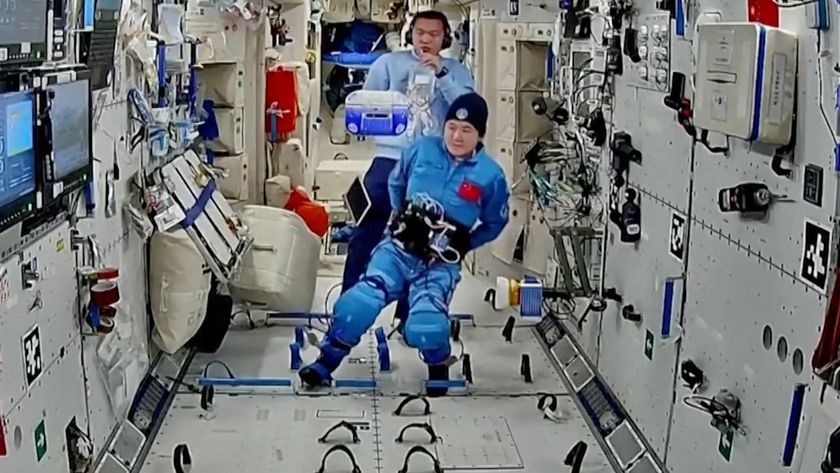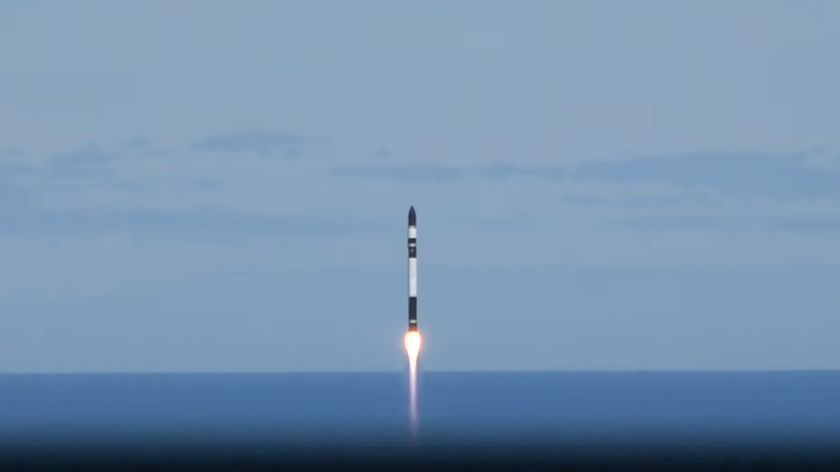Another Mars Rover Is Stuck ... in California

PASADENA, CALIF. -- In an unassuming building at NASA's Jet Propulsion Laboratory here, the struggle to free the Spirit rover from a patch of soft Martian sand has been brought to Earth.
Spirit, one of the two Mars Exploration Rovers (MER) currently on the surface of the red planet, has been stuck in Martian soil up to its hubcaps since May 6 when it became mired in a dirt patch (now called "Troy") while driving backward.
"So we backed into trouble," MER project manager John Callas said this afternoon while standing in a viewing hallway overlooking a dirt-filled pit housed in JPL's In-Situ Instrument Laboratory, where a replica of Spirit and its twin Opportunity is being used to recreate Spirit's predicament and develop a sound method for freeing the rover.
"We want to make sure we don't make things worse, so we want to find out what doesn't work here and make sure we don't do that on Mars," Callas said.
Soil 'cocktail'
In the pit below, two men are shoveling soil into a mound. This mound will recreate the 12-degree slope that Spirit is currently sitting on, with its left side leaning down.
Get the Space.com Newsletter
Breaking space news, the latest updates on rocket launches, skywatching events and more!
Once the space is dug, the test rover will be put atop the slope in an enclosed sand box filled with a soil mixture concocted by mission scientists to mimic the sand Spirit's wheels are caked in.
Callas and his team are still working on perfecting this soil "cocktail," he said, to make sure it has the same properties as the "light, fluffy material" Spirit's wheels are sunk into so that the team can try out maneuvers with the test rover and see how Spirit might respond. The mixture will mostly be a combination of a substance called diatomaceous earth and clay, materials the rover team can pick up at their local Home Depot.
"We're bringing Mars down here to Earth," Callas said.
Down in the pit, the test rover has its two right front wheels submerged in just such a mixture piled on top of a blue tarp placed over the dirt that fills the rest of the space.
Rover engineers can have the test rover spin its wheels to see if they respond in the same way that Spirit's are. Callas calls this a "shoebox test."
The white mixture covering the wheels is indeed soft and fluffy to the touch. Callas squats down in his impeccably neat button-down shirt, khakis, and shined shoes and picks up a handful of the stuff.
"It's almost flour-like," Callas says.
Unfortunately for Spirit, gaining traction in this kind of stuff is difficult, making the team's rescue task even trickier and the test rover trials more important.
Once the soil recipe is perfected, the test rover will have its left side submerged in the sand, just as its sister Spirit does millions of miles away on Mars.
But getting the soil mixture right isn't the only problem facing the team.
Complications
Spirit recently used the microscopic imager on the end of its robotic arm to peer underneath its belly. The images, while out of focus, showed a rock barely touching the underbelly of the rover. This situation could cause even more problems with traction, by taking some of the weight off the rover's wheels.
The rock also poses a hazard to the rover itself: "Any rock underneath is a potential rock that could foul the wheels," Callas said, like a stick shoved into the wheel of a bicycle. Spirit already has one bum wheel, which has been disabled for three years. With this obstacle, the team will have to maneuver the rover with even greater care to make sure they don't lose another wheel, making the tests here on Earth key to getting Spirit out safely.
The team also has to make sure that their maneuvers don't sink Spirit deeper into the soil.
"If you set the belly on the ground, it's pretty much game over at that point," Callas said.
Once the test rover is hoisted onto its incline and its wheels are firmly submerged, the team will likely explore one of two scenarios for getting the rover unstuck. One option is to go straight forward; the other is to go sideways and "plow through the material" downslope, Callas said.
Moving downslope has the advantage of using gravity in their favor, "so we have gravity helping push the rover along," Callas said.
The test rover's responses will help determine which method to use on Mars.
The tests on Earth will also help set expectations for how long it will take to dig Spirit out. When Opportunity became stuck in the sand near Purgatory Dune, it took weeks to free the rover. It could take even longer to free Spirit
"We suspect it's going to take a long time to get out of here," Callas said.
- Video Show – Rover Tracks
- Video – Spirit: The Little Rover That Could
- Spirit Stuck in 'Insidious Invisible Rover Trap' on Mars
Join our Space Forums to keep talking space on the latest missions, night sky and more! And if you have a news tip, correction or comment, let us know at: community@space.com.

Andrea Thompson is an associate editor at Scientific American, where she covers sustainability, energy and the environment. Prior to that, she was a senior writer covering climate science at Climate Central and a reporter and editor at Live Science, where she primarily covered Earth science and the environment. She holds a graduate degree in science health and environmental reporting from New York University, as well as a bachelor of science and and masters of science in atmospheric chemistry from the Georgia Institute of Technology.











